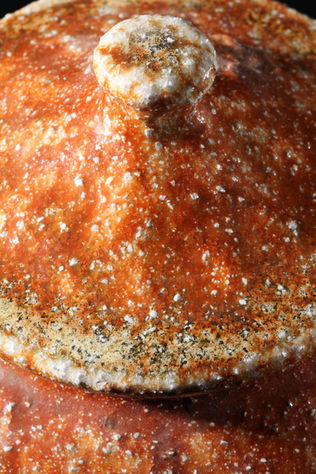Jui Hwa Lin
Location
Taiwan
About
Jui Hwa Lin is a ceramic artist who began his craft as a traditional potter. Unsophisticated, simplistic, dedicated, and persistent. For 30 years, he unceasingly explored the realm of the unknown in ceramics and pioneered an entirely new artistic territory. The innovative ceramist employs high temperature wood-firing, overturning the definition of beauty as told by classical ceramics, while sublation Japanese wabi-sabi aesthetics and the glaze expression of modern ceramic art. He uses the earth, wood, and his hands to concentrate on his dialogue with the fire. Though seemingly unpolished, his works are rife with subtle variations. For example, the white jade quality, crystalline patterns, amber and jade colors between 1300℃- 1360℃; the warmth of antique jade, the ice crack, golden thread, and leopard skin patterns, and the silver, seashell, and pearl-like shine between 1380℃-1450℃; and the realm above 1500℃yet to be explored by mankind. And Lin will be the first person down the path toward future ceramics. His works, the Mother Glaze - the art of transformation, will be offer his interpretation of new artistic concepts of fire and earth, expressing the ultimate in raw clay and the passion of kiln fire. From Lin’s creations and practices, we can reflect deeply on human culture, we can find a new direction with which mankind creates substances and seek a better life.
Artist Statement
Part 1
Discussion of common types of kilns: wood firing, gas and electric
Different heating and energy sources
Structural analysis of the three types of kilns
Part 2
Lessons from the past and Mother Earth
Lin’s 30 years of kiln firing experience in Taiwan
The theory of rock developed through Lin’s years of fossil collection and subsequent perspective on the definition of “rocks” and “ceramics”.
Part 3
Sustainability: eco-friendly wood-firing
What is "eco-friendly wood-firing"?
Ways to reduce pollution by reducing the refinement of clay, mining, and production of glaze materials
Utilising a primary source of fuel (wood) in harmony with the land and nature cycles
Achieving reduction firing without producing black smoke during firing
Characteristics, preparation, and applications of using different wood
Designing high-temperature kilns with safety and environmental concerns in mind
The concept of “Mother Glazes” by single-fire without applying glaze to create textures that can only be observed in high-temperature (above 1400 degrees Celsius) wood-fired ceramics.












